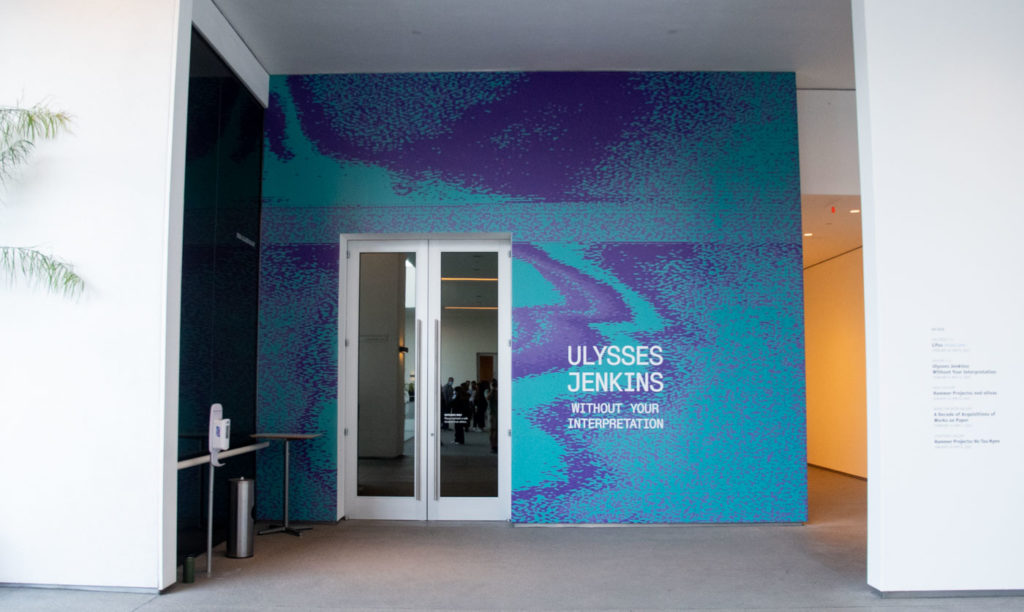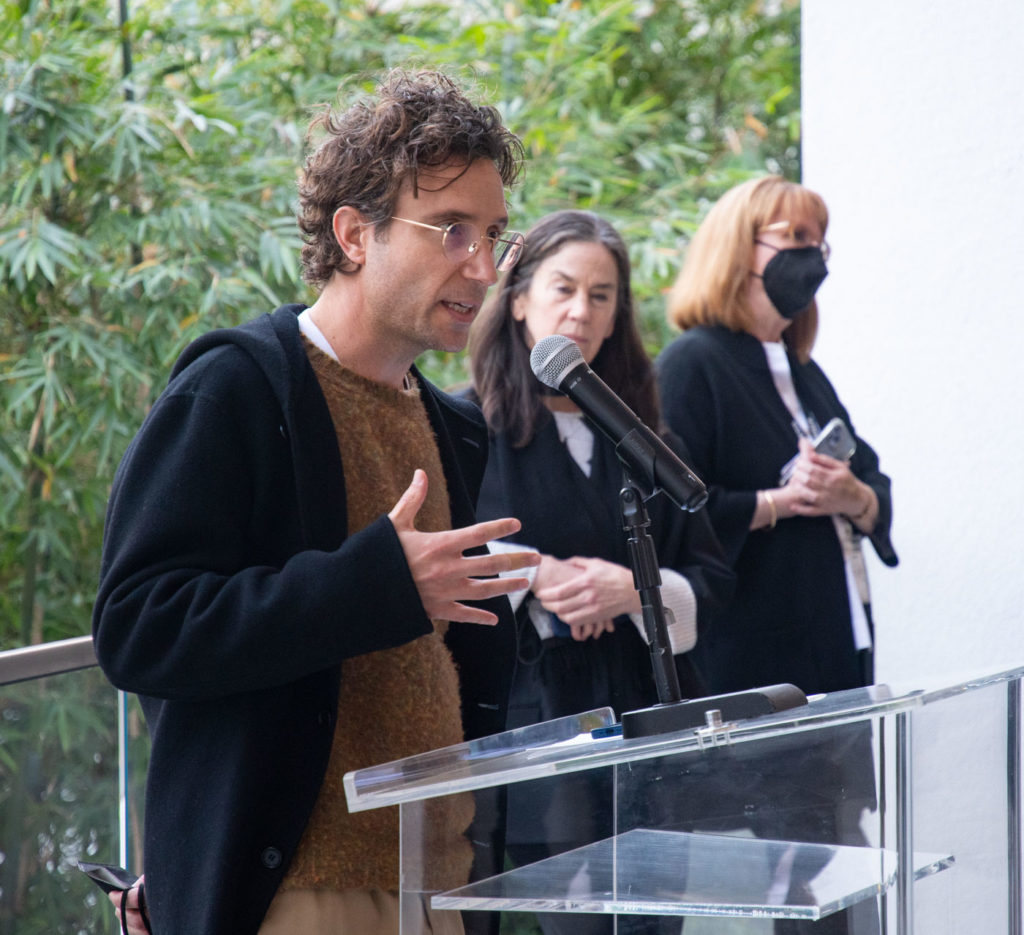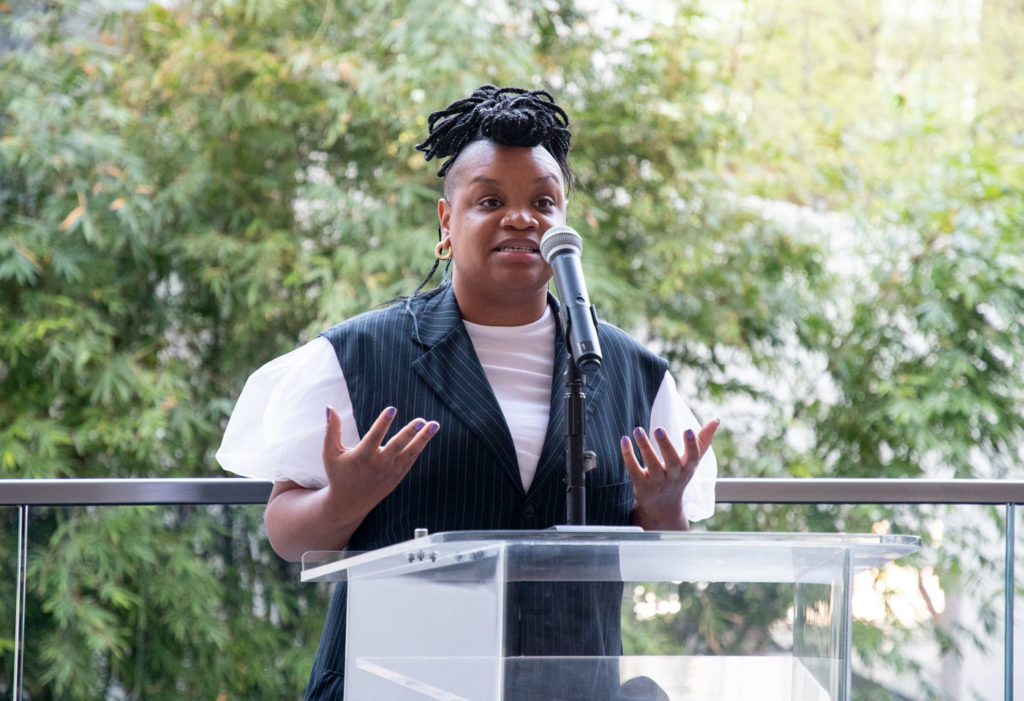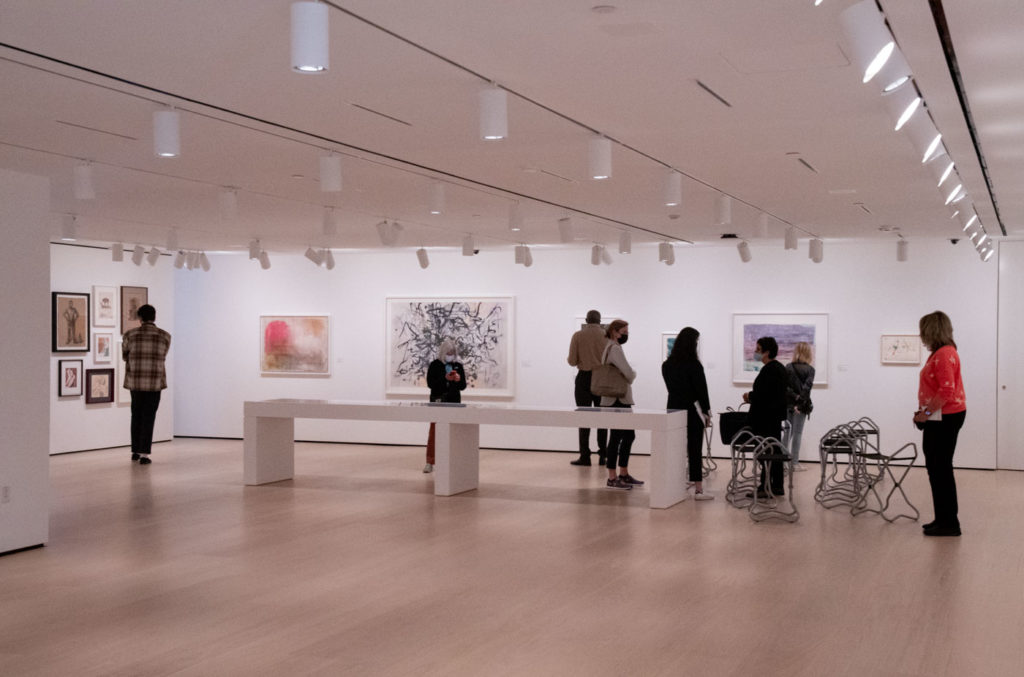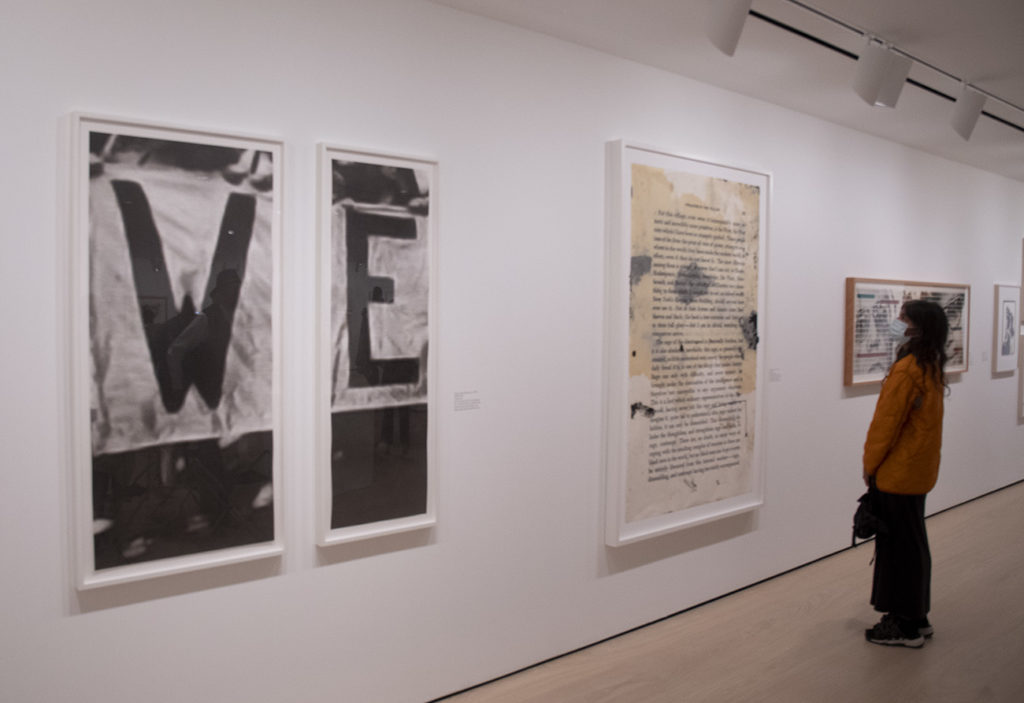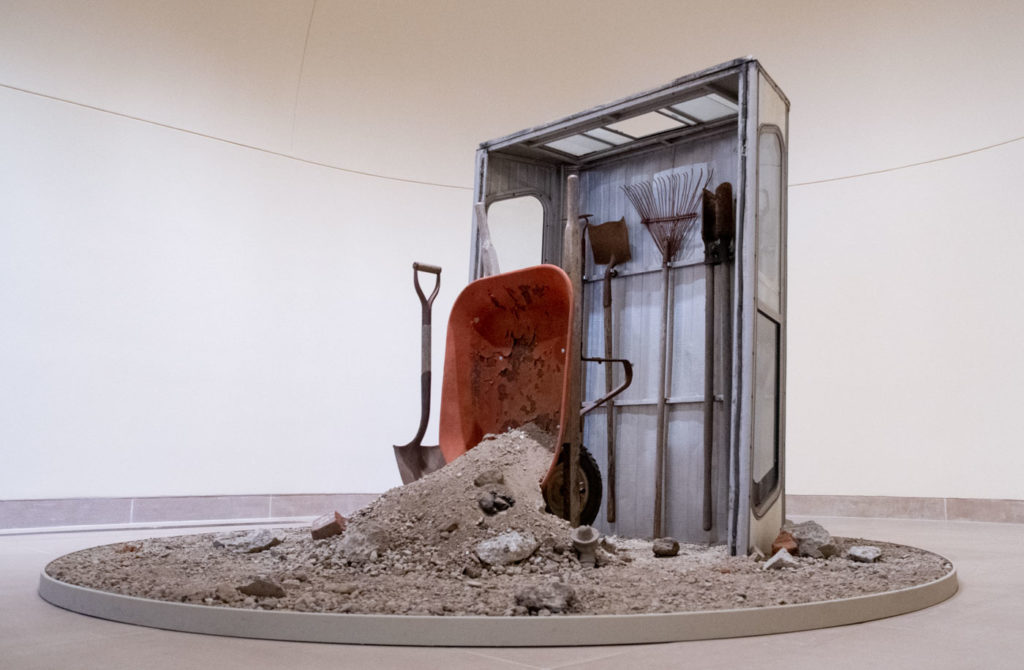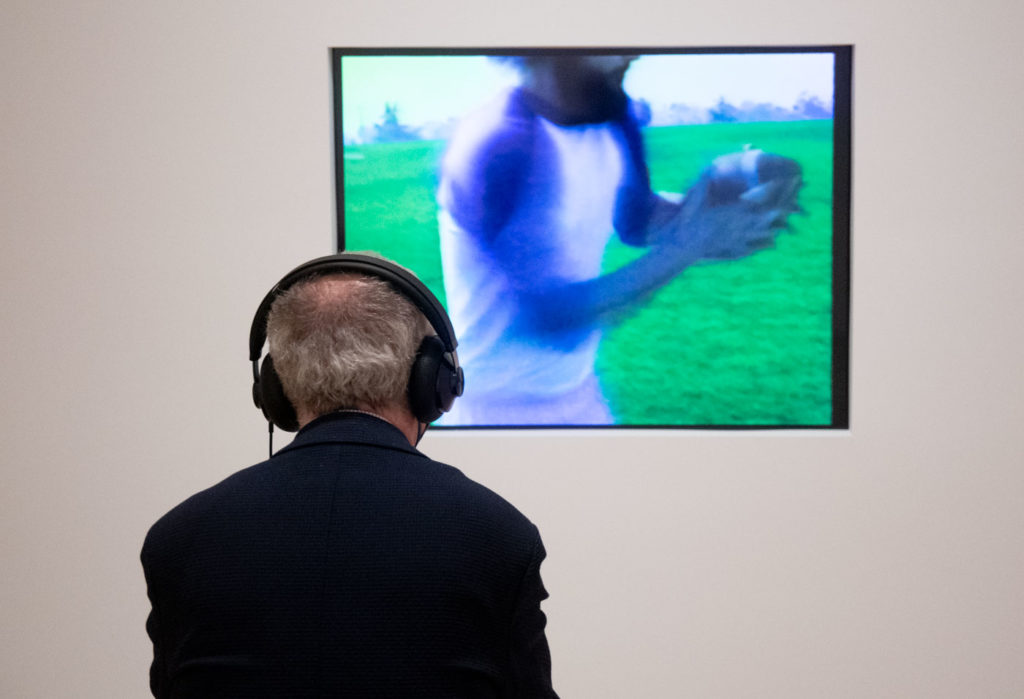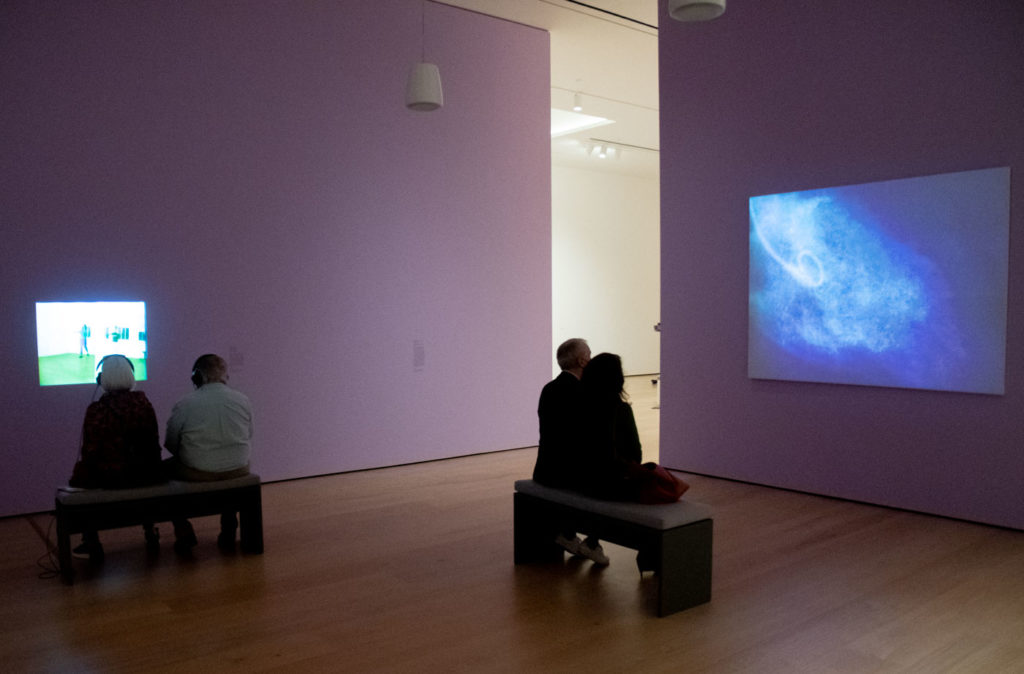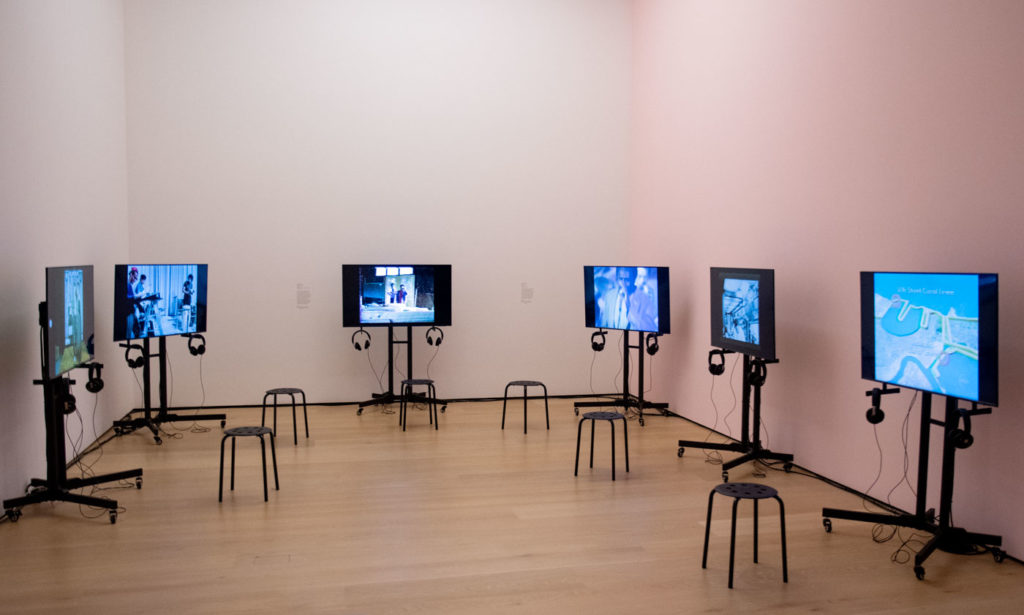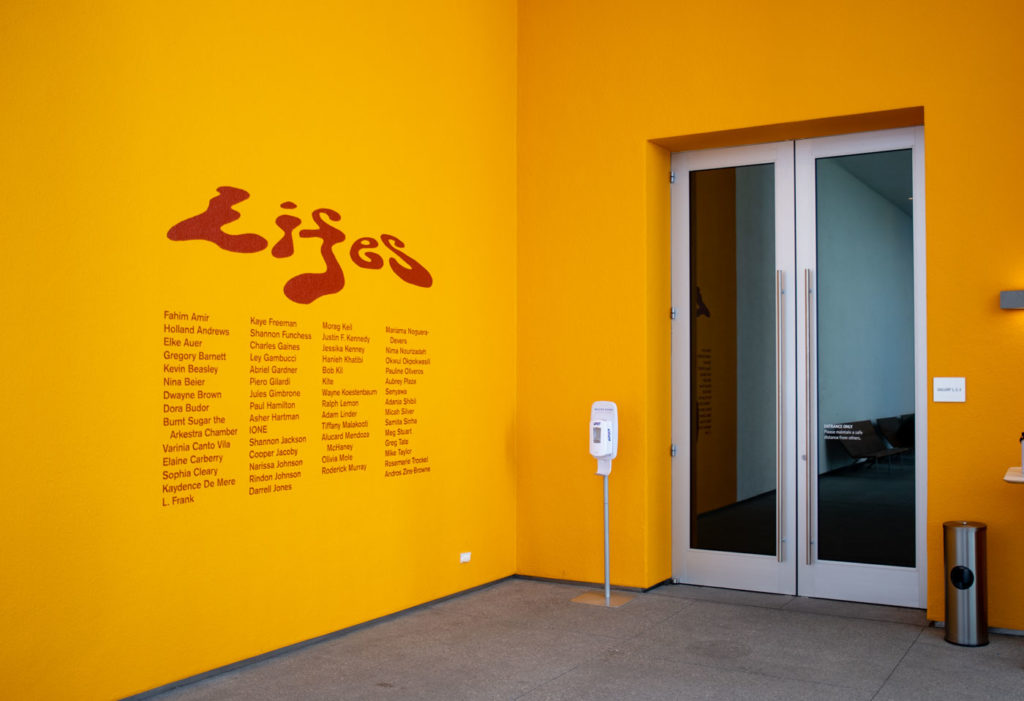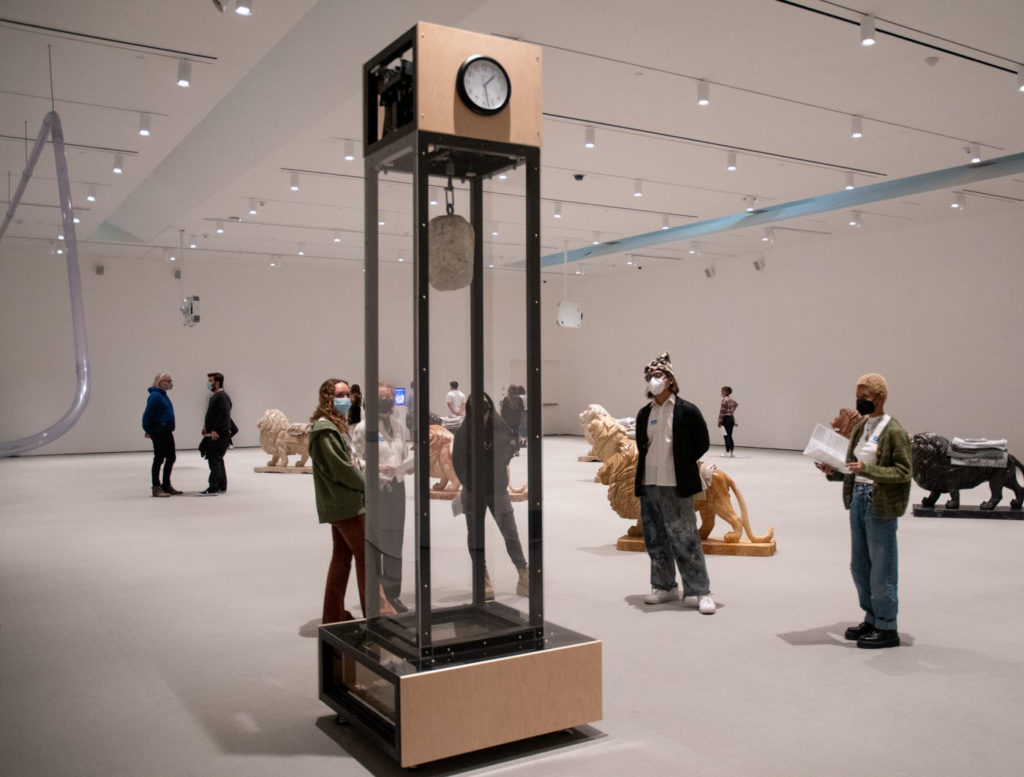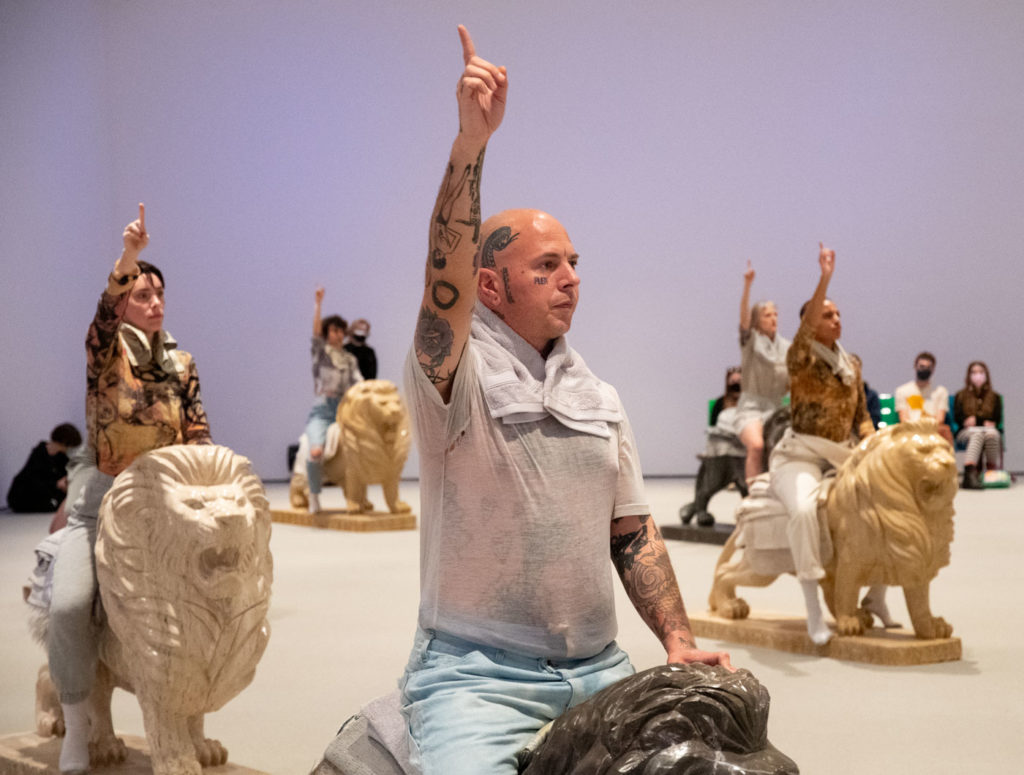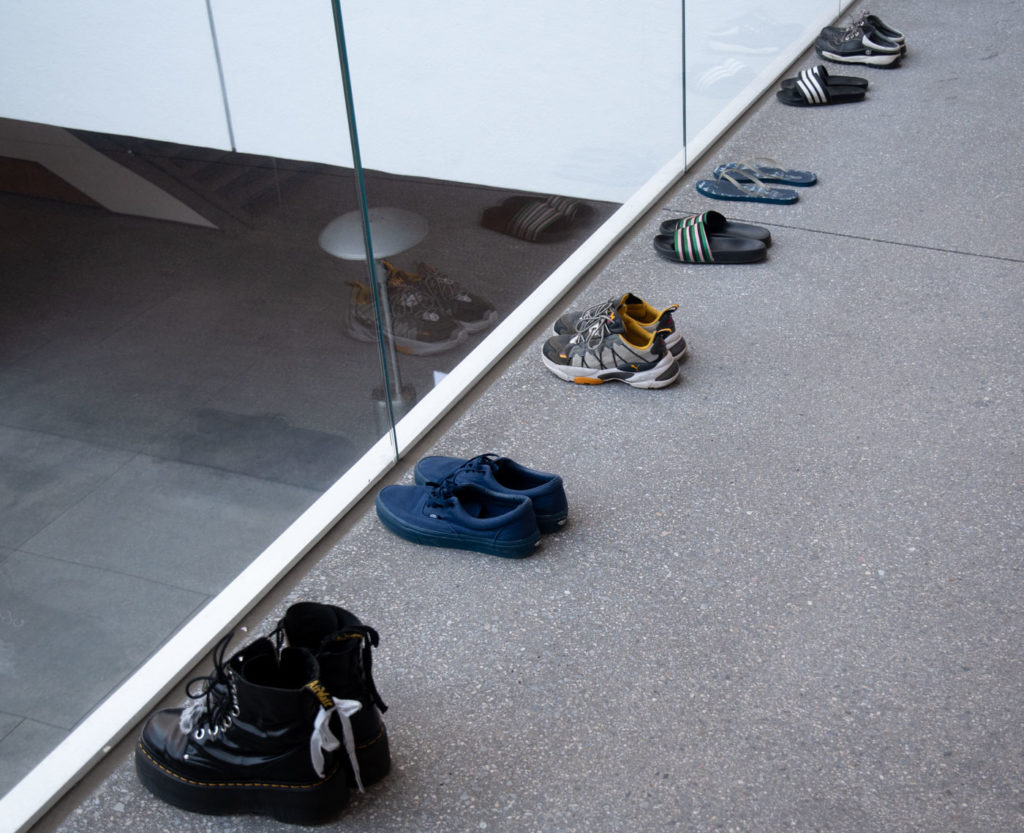(Kyle Kotanchek/Daily Bruin)
By Kyle Kotanchek
February 19, 2022 at 9:08 p.m.
On Wednesday, the “Ulysses Jenkins: Without Your Interpretation” exhibit went on display at Westwood’s Hammer Museum. Curated by Meg Onli and Erin Christovale, the exhibit is named after one of Ulysses Jenkins’ previous video works.
Starting in the 1970s, Jenkins was one of the first Black artists to use the power of video to explore race relations in the United States. His work focused on minorities and how mass media harmfully depicted Black people.
Aram Moshayedi introduces the new exhibition titled “Lifes.” Moshayedi said “Lifes” was created through the collaboration of four writers with different perspectives working to explore how different types of artistic mediums can come together to create a new art form. “Lifes” later included over 50 collaborators, including painters and dancers.
Christovale pays homage to Jenkins, celebrating him as a trailblazing Black video artist.
People visit the “A Decade of Acquisitions of Works on Paper” exhibit, curated by Connie Butler and Cynthia Burlingham. The prints and drawings shown are all contemporary paper works, with the earliest being created in the 1960s.
Despite the word displayed being “WE,” the original artwork actually spelled the word “WOMEN.” Sharon Hayes, the original artist, made this adaptation herself, and the curators of “A Decade of Acquisitions of Works on Paper” were inspired to replicate it.
Hayes, a UCLA alumnus, documented numerous feminist movements throughout her lifetime. The letters being framed in this piece were taken from a sign from the 1970 Women’s Strike for Equality march in New York City.
Butler said that “WE” is meant to symbolize the universal struggles of womanhood, but the separated framing demonstrates the diversity of women and the inability to group all women into a single entity.
“A prayer for change,” the centerpiece of noé olivas’s work “Let’s Pray,” stands prominently in the back of the room. The work done by olivas often explores the labor of working-class, immigrant and artistic communities. The piece is an assemblage of objects meant to represent his familial legacy of working landscaping jobs in San Diego.
A man watches one of Jenkins’ films. Each TV had a stool and a pair of headphones to create an immersive experience.
Two couples watch Jenkins’ films. Despite each movie’s audio being integral to the art form, the exhibit itself is silent.
Six stools sit empty in front of the TV screens.
Inside “Lifes,” a cycle of audio, video and live performances repeat, with each piece inside competing for visitor attention. The gallery goes against the philosophy of “Gesamtkunstwerk,” meaning “the total work of art,” in which pieces work together to form a cohesive scene. Instead, the pieces are meant to show the incompatibilities that some forms of art have with others.
Every 10 minutes, Charles Gaines’ “Falling Rock” winds up a rock and then drops it, making a loud noise that disrupts the entire exhibit and adds to the conflict the curators were hoping to cultivate.
Every hour at exactly 33 minutes, a group of dancers enter the “Lifes” exhibit and mount the lion sculptures. In unison, the dancers slowly sway in a circle, sign and raise their right arm pointing upward. After 10 minutes of performing, all the dancers collectively leave.
The dancers’ shoes sit neatly aligned near the exhibition’s entrance.

